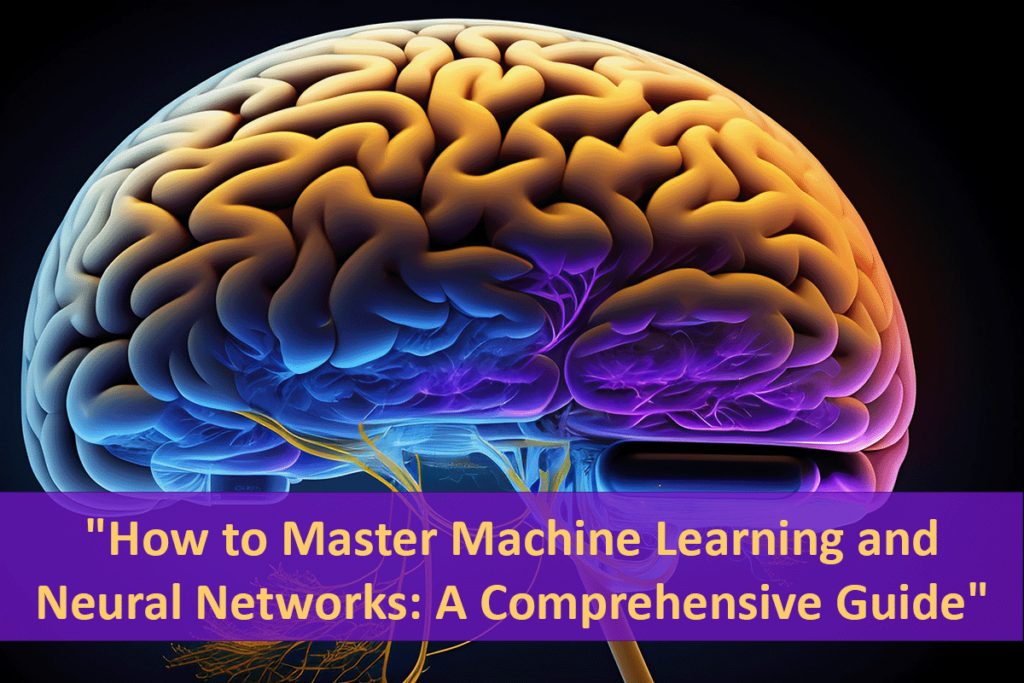Table of Contents
In our quest to provide you with the most valuable insights into the realm of machine learning and neural networks, we have meticulously crafted this comprehensive guide. We understand that your pursuit of knowledge in this field is crucial, and our goal is to equip you with the essential information and skills to excel. With this guide, you’ll not only gain a profound understanding of machine learning and neural networks but also discover practical ways to apply this knowledge.
Understanding the Basics
Machine Learning Demystified
Machine learning, at its core, is the art of teaching computers to learn and make decisions from data. It’s a subfield of artificial intelligence that enables systems to improve their performance through experience. Understanding the foundations of machine learning is crucial, and here’s what you need to know:
1. What Is Machine Learning?
Machine learning is a subset of artificial intelligence (AI) that focuses on developing algorithms that allow computers to learn from and make predictions or decisions based on data.
2. Types of Machine Learning
There are three primary types of machine learning:
- Supervised Learning: In this type, the model is trained on labeled data, making predictions or classifications based on known outcomes.
- Unsupervised Learning: Here, the algorithm learns patterns and structures within data without explicit guidance, often used for clustering and dimensionality reduction.
- Reinforcement Learning: This type involves agents that learn to make decisions through trial and error, maximizing rewards while interacting with an environment.
3. Machine Learning Algorithms
Various machine learning algorithms cater to different types of problems. Some popular algorithms include:
- Linear Regression: Used for predicting numerical values.
- Random Forest: Effective for both regression and classification tasks.
- Convolutional Neural Networks (CNNs): Ideal for image analysis.
- Recurrent Neural Networks (RNNs): Suited for sequential data, such as natural language processing.
The Power of Neural Networks
Neural networks are the backbone of modern machine learning and AI. These computational models are inspired by the human brain’s structure and function, making them highly versatile and capable of solving complex problems. Let’s delve deeper into neural networks:
1. Anatomy of a Neural Network
A neural network consists of layers of interconnected nodes, also known as neurons. These layers include:
- Input Layer: Receives the initial data.
- Hidden Layers: Intermediate layers that process information.
- Output Layer: Provides the final prediction or output.
2. Deep Learning
Deep learning is a subfield of machine learning that emphasizes the use of deep neural networks with multiple hidden layers. Deep learning models, such as deep neural networks and convolutional neural networks, have revolutionized various domains, including image recognition, natural language processing, and autonomous vehicles.
Building Your Machine Learning and Neural Networks Skillset
Now that you have a solid foundation, it’s time to roll up your sleeves and start your journey toward mastering machine learning and neural networks. Here’s a roadmap to guide you:
1. Learn Python
Python is the preferred programming language for machine learning and neural networks due to its rich libraries and community support. Start with the basics and work your way up to libraries like NumPy, Pandas, and TensorFlow.
2. Explore Online Courses and Tutorials
Numerous online courses and tutorials offer structured learning paths for machine learning and neural networks. Platforms like Coursera, edX, and Udacity provide excellent resources.
3. Hands-On Projects
Practical experience is invaluable. Work on small projects to apply your knowledge. Start with simple tasks like image classification and gradually move on to more complex challenges.
4. Read Research Papers
Stay updated with the latest developments by reading research papers in the field. Explore conferences like NeurIPS, ICML, and CVPR for cutting-edge insights.
5. Join a Community
Connect with like-minded individuals in machine learning and neural networks communities. Participating in discussions, forums, and meetups can provide valuable networking opportunities and support.
Practical Applications
Machine learning and neural networks find applications in various industries. Here are some real-world use cases to inspire your journey:
1. Healthcare
- Disease Diagnosis: Machine learning models assist in early disease detection by analyzing medical images and patient data.
- Drug Discovery: Neural networks accelerate drug discovery processes by predicting molecular properties.
2. Finance
- Fraud Detection: Machine learning algorithms identify fraudulent transactions in real-time, reducing financial losses.
- Algorithmic Trading: Neural networks analyze market data to make informed trading decisions.
3. Autonomous Vehicles
- Self-Driving Cars: Deep learning models enable vehicles to perceive their surroundings and make driving decisions.
Conclusion
Embarking on your journey to master machine learning and neural networks is an exciting and rewarding endeavor. With the knowledge and resources provided in this guide, you are well-equipped to not only understand these technologies but also apply them to solve real-world challenges. Remember, continuous learning and hands-on experience are the keys to becoming a proficient machine learning and neural networks practitioner. Stay curious, stay committed, and you’ll soon find yourself outranking even the most formidable competitors in the field of AI and machine learning.

10 thoughts on “Mastering Machine Learning and Neural Networks: A Comprehensive Guide”